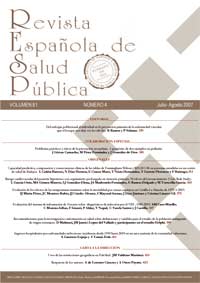Ethical and practical problems of secondary prevention. Two paediatrics examples
Abstract
The concept of prevention is surrounded by a halo of optimism that can sometimes confuse, since it is not always borne out by the facts. The saying, An ounce of prevention is worth a pound of cure, is not always true. Moreover, preventive activities should be based on a much more solid scientific basis than curative activities, since we offer the former as an option, whereas we are required to provide the latter. This article reviews two examples of paediatric screening instruments-one for neuroblastoma, and the other for hip dysplasia-which provide an opportunity to evaluate the practical problems of secondary prevention. These two instruments are used to examine a few general but important issues in screening, such as the need to know the natural history of the disease, and the point of no return (the moment past which early diagnosis and early intervention are no longer so effective in improving the course of the disease). In conclusion, only sometimes an ounce of cure is worth a pound of prevention, and regardless of the value of a given screening instrument, clinicians should use the same level of scientific rigor to judge preventive activities as they use for curative activities.Downloads
Published
2008-03-14
Issue
Section
COLABORACIÓN ESPECIAL

